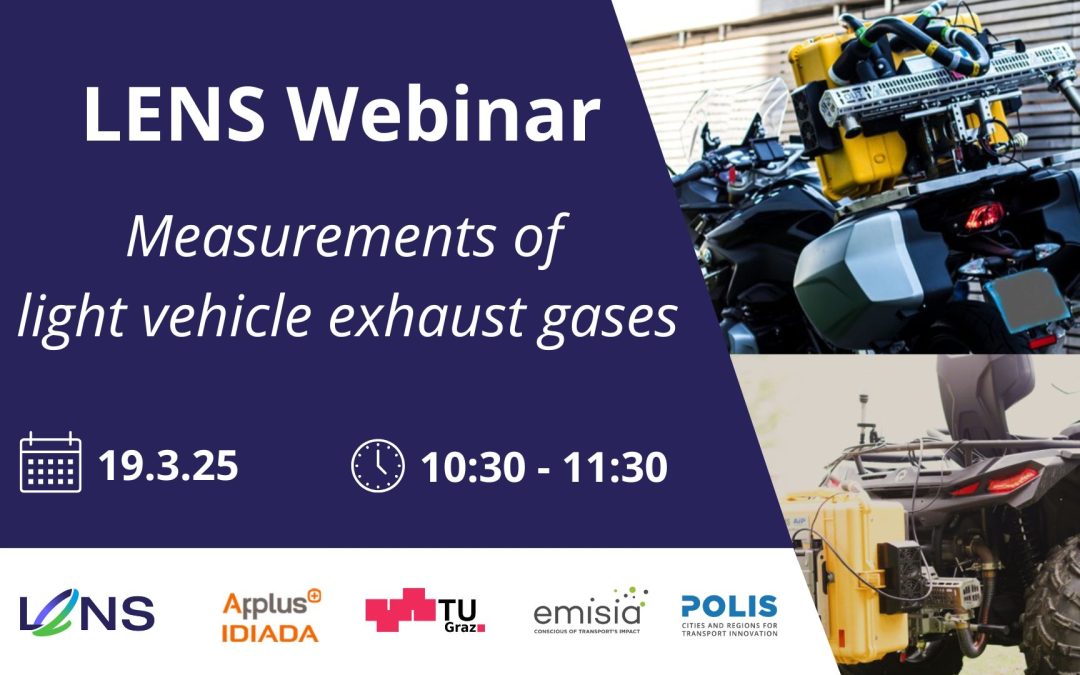This week’s webinar on the topic of exhaust gas measurements from laboratory- and real-world driving tests with small portable emissions measurement systems was attended by 60 stakeholders, who represented OEMs, the L-vehicle industry, project partners and members of the LENS stakeholder group.
You can find the webinar recording and the three presentations from EMISIA, Applus IDIADA and TU Graz below. In case you attended the webinar and have further questions or ideas for cooperation, do not hesitate to contact the speakers or POLIS as dissemination manager.
Webinar Summary
An overview of the LENS project by Leonidas Ntziachristos
The LENS coordinator briefly outlined the consortium members and the duration of the project, while emphasising the importance of the LENS measurement as noise- and air pollution remains a significant health risk in the European Union and beyond.
Furthermore, he highlighted the LENS objectives, such as the development of L-vehicle measurement techniques and in-field identification of tampered LVs. He continued with a brief overview of the different testing methods for pollutant emissions testing, such as in the laboratory, road noise testing and other measurement techniques.
Overview & background of measurements by Alba Garbi, Applus IDIADA
Since the L-vehicle category covers a large number of vehicle types, each of these, and their use cases, from smaller mopeds to quads and buggies, were explained.
The presentation continued with an overview of tampered vehicles and the most common tampering methods, which are primarily the exhaust and air intake, as well as the Engine Control Unit (ECU). Furthermore, several charts were presented that showcased the overall emission of different vehicle classes beyond the L-vehicle category.
Preliminary outcome of L-vehicle tests by Stephan Schmidt, TU Graz
Even though the measurement campaigns by the various LENS partners were already concluded, the analysis of the captured data is currently still ongoing. Therefore, the presented results by TU Graz are currently preliminary.
The focus of the first part of this presentation was the explanation of the testing procedures in the laboratories, as well as with PEMS & SEMS on the road. TU Graz highlighted that the test of smaller PEMS is essential to avoid the distortion of the measurements by the additional weight of the equipment. Whereas a standard PEMS weight around 40kg, SEMS and mini-PEMS weight is around 10kg. Additionally, the roadside emission equipment that was used in the three LENS pilots was briefly mentioned.
Stephan Schmidt drew a couple of preliminary results, which concluded that the average fleet emissions in regulatory test cycles are well below the legal limits, even though outliers are sometimes significantly below or above the limits, even though outliers are sometimes significantly below or above the limits. Furthermore, LV fleet average on-road emissions seem to be reduced at the same pace as the Euro emission limits.
Presentations
- Introduction to the LENS project – EMISIA
- Overview & background of measurements – Applus IDIADA
- Preliminary outcomes – TU Graz

